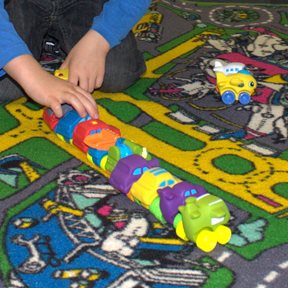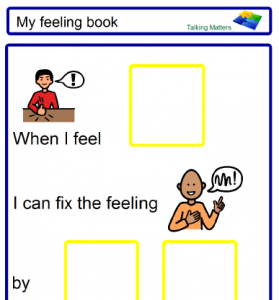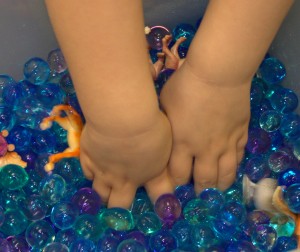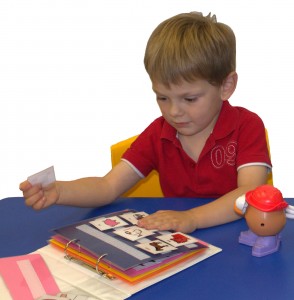 April is Autism Awareness Month and we are focusing on ASD in all our blogs for the next four weeks and we will cover a variety of topics about kids with ASD. Let's start with the top 10 tips for supporting kids from the Talking Matters team of speech pathologists, occupational therapists, psychologists and our autism adviser.
April is Autism Awareness Month and we are focusing on ASD in all our blogs for the next four weeks and we will cover a variety of topics about kids with ASD. Let's start with the top 10 tips for supporting kids from the Talking Matters team of speech pathologists, occupational therapists, psychologists and our autism adviser.
1. Set kids for success. The first part of helping a child with autism be successful is to know the child as well as you can. What are their strengths, weakness, interest and dislikes. Start tasks off small in the beginning so kids get to experience completing things and getting to a reward, then gradually increase your expectations.
Break up tasks into small achievable steps. A reward won't work if you never get to it. If tasks are short and achievable, the child gets their reward and wants to try again.
Give ASD kids positive feedback to know they are on the right track. They often fear failure and want to be perfect. Positive feedback and concrete rewards linked to special interests are highly motivating.
Make sure the environment helps the child be successful to by reducing distractions and sensory experiences that are unpleasant for them.
2. Work with the student. Provide the resources they need but also provide the modelling, practice, teaching, consistency and repetition needed to learn the skills and strategies they need to manage tasks. This support will help the student move to a more independent management of their own behaviour and in the long term this will reduce the amount of time and effort needed by an adult.
 3. Make it visual. People with ASD are visual learners. Visuals can help kids to understand what is going on around them which reduces anxiety and increases independence. Visuals can also help kids understand what is required of them, measure their progress and see how much more they have to go. They can also see what the reward is at the end of a task.
3. Make it visual. People with ASD are visual learners. Visuals can help kids to understand what is going on around them which reduces anxiety and increases independence. Visuals can also help kids understand what is required of them, measure their progress and see how much more they have to go. They can also see what the reward is at the end of a task.
Visuals may include the use of symbols, schedules or photographs or even written words depending on the child's ability. Model the use of visuals and help children practice using the visuals. Use the visuals consistently and provide opportunities for repetition. Click here for more on visuals for preschool and visuals for school aged kids.
4. Make it predictable. Kids with ASD don't usually like surprises, even nice ones. Make sure they know what is coming up and support this with visuals so they can check back when they need to. Timers help children understand how long they are able or need to do a task or activity. They can be used to help kids complete activities you want them to do, limit and help them move from activities they enjoy and also to manage rewards,all in a predictable way. Schedules help with predictability and support kids to understand changes to routines. Checklists can also help make tasks more predictable.
Don't change things for the sake of change, such as where the child keeps their things or where they sit. ASD kids respond better to routine than to change and the time taken to resettle after a change can result in lost learning time.
5. Use rewards. Typical kids enjoy rewards such as praise and stickers because they are motivated by adult approval. This does not always work for kids with ASD. Rewards related to the child's special interests are often far more motivating. Match the reward to the child. Younger and low functioning kids need rewards more frequently. Older kids may be able to wait longer for a reward, but not too long, especially with a new or difficult task.
Match the reward to the effort required too. Big or tricky tasks need bigger rewards, while familiar or easier tasks need smaller rewards. If all the rewards are the same kids may not want to try trickier things. Remember for ASD kids new tasks are tricky, or even scary just because they are new, even if the actual activity is not difficult. So begin with big rewards, given quickly for trying new activities and gradually fade rewards as the task becomes more familiar.
 6. Consider sensory issues. Understand the child's sensory experiences as best you can: what they like and don't like, what calms them down and what helps them be alert and focused. Reduce the sensory load placed on the child. Be aware of what sensory stimulation is stressful for the child and reduce this when possible. This may mean reducing noise levels, visual distractions, some activities that may be noisy or involve unpleasant stimulation of the child's sense of touch or smell.
6. Consider sensory issues. Understand the child's sensory experiences as best you can: what they like and don't like, what calms them down and what helps them be alert and focused. Reduce the sensory load placed on the child. Be aware of what sensory stimulation is stressful for the child and reduce this when possible. This may mean reducing noise levels, visual distractions, some activities that may be noisy or involve unpleasant stimulation of the child's sense of touch or smell.
Use calming sensory experiences to reduce anxiety. Movement, pressure, fiddle toys and other strategies can have a calming and focusing effect on kids. An occupational therapist can help you find what works best for a child's individual needs.
7. Support social skills. Kids with ASD often need to be taught social skills very explicitly. Children with ASD do not "absorb" social skills from being with others in the way typical kids do. They can however learn these skills with specific teaching and practice. Use social stories to help kids know how to respond in social situations. Social stories help make social situations more predictable and therefore less stressful.
Be aware of the social load and how it impacts on the child's anxiety levels. Break up group activities with time for quiet, independent activities.
 8. Support communication. Be as clear, concise and concrete with instructions as possible. Reduce verbal information to the most important key words. Use simple, concrete words and be careful with negatives. Tell kids what to do, rather than what not to do. Don't use the word "no" unless you never, ever want the child to do that thing. Avoid verbal overload as kids with ASD are visual learners.Keep verbal information to a minimum and support verbal information with visuals.
8. Support communication. Be as clear, concise and concrete with instructions as possible. Reduce verbal information to the most important key words. Use simple, concrete words and be careful with negatives. Tell kids what to do, rather than what not to do. Don't use the word "no" unless you never, ever want the child to do that thing. Avoid verbal overload as kids with ASD are visual learners.Keep verbal information to a minimum and support verbal information with visuals.
Allow time to process verbal information. Give kids time to answer questions. Kids vary in the time they need to process information and some kids may need up to 30 seconds so wait before repeating an instruction or question. Be aware of how long each child needs to respond and wait for them to answer. Using kids names to get their attention and using visuals may reduce the amount of time needed for kids to respond.
Limit choices and be very specific with what choices are on offer. Too many choices can be overwhelming. Make choices very clear and specific and limited to two or three. Avoid getting drawn into long discussions. Redirect children to what you want them to do.
If the child has a communication support such as an ipad or PECS folder make sure it is available to them at all times. If you are not sure how to use it speak with the child's speech pathologist.
9. Support organisation skills. ASD students often struggle with organisation but can be helped with the use of organisational aides such as dairies, schedules and colour coded books. Organisational supports may include colour coding items and setting up visuals such as timetables and lists for managing equipment such as things to be placed on the desk, things take for homework and things to put in a schoolbag.
Help ASD kids organise their equipment. Everything in one folder may be best for older kids. Personal items on their desk rather than shared items such as pencil tins may be best for younger kids. Upright boxes for books work better than a pile. These boxes can be moved to lockers when a child is older.
 10. Look for meaning in behaviour. Remember that anxiety is a common emotion for kids with ASD. It is often the cause of meltdowns and behaviour issues. Anxiety is often caused by sensory overload and/or social overload. A child who runs away or hides may be trying to "escape" from too much sensory input. A child who pushes or hits out may be overwhelmed by too much social input. Try to reduce the triggers for the behaviour and provide more appropriate ways for the child to manage their needs.
10. Look for meaning in behaviour. Remember that anxiety is a common emotion for kids with ASD. It is often the cause of meltdowns and behaviour issues. Anxiety is often caused by sensory overload and/or social overload. A child who runs away or hides may be trying to "escape" from too much sensory input. A child who pushes or hits out may be overwhelmed by too much social input. Try to reduce the triggers for the behaviour and provide more appropriate ways for the child to manage their needs.
Use break times. Notice signs of anxiety in the child and provide a place where the child can have a break as well as some calming activities for the child to do during their break. This may be a quiet place with some sensory toys or a calming favourite activity. Help the child learn to request a break before their behaviour becomes unmanageable and to rejoin the group after they are feeling calm.
Looking for support for your child? Talking Matters has a team of occupational therapists who can help with children's sensory challenges. We also have a psychologist to help with social, emotional and behavioural challenges. Find out more about how Talking Matters can help your child and support your family.
Talking Matters now has an ASD consultant who can help develop individual supports and strategies for children to use at home and at school. Find out more about this service.
 Looking to learn more about ASD? We have a number of workshops planned for teachers, SSOs and child care workers to support children with ASD.
Looking to learn more about ASD? We have a number of workshops planned for teachers, SSOs and child care workers to support children with ASD.
Talking Matters provides assessment, diagnosis, therapy and support for children on the autism spectrum and their families. We are providers under NDIA and we are also happy to accept medicare plans. To find out more about our services and our team visit our website. To connect with our community of families, therapists and educators join us on Facebook, Twitter and Pinterest.
We hope you find these strategies helpful for the person in your life with ASD!
Related Blog Posts
If you liked this post you may also like:
Top 10 speech ideas
Sleep - Supporting You Child's Development
3 year old questions
New Talking Matters Website!



